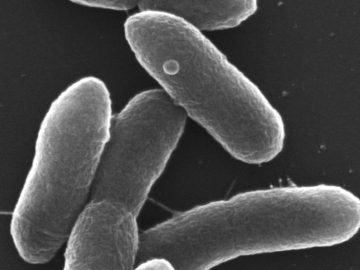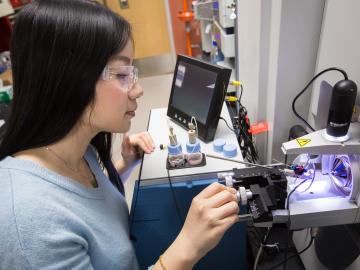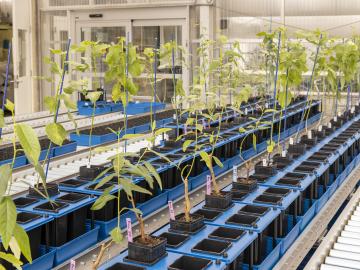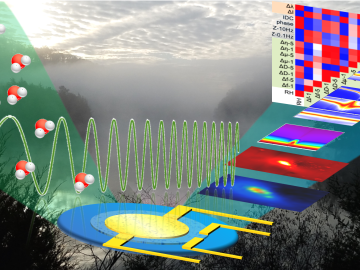
Filter News
Area of Research
- Advanced Manufacturing (5)
- Biological Systems (2)
- Biology and Environment (67)
- Computational Biology (2)
- Computational Engineering (1)
- Electricity and Smart Grid (1)
- Energy Frontier Research Centers (1)
- Energy Science (55)
- Functional Materials for Energy (1)
- Fusion and Fission (4)
- Fusion Energy (1)
- Isotopes (6)
- Materials (67)
- Materials for Computing (10)
- National Security (7)
- Neutron Science (29)
- Nuclear Science and Technology (10)
- Quantum information Science (2)
- Supercomputing (67)
News Topics
- (-) Bioenergy (112)
- (-) Biomedical (73)
- (-) Composites (35)
- (-) Frontier (64)
- (-) Molten Salt (10)
- (-) Nanotechnology (64)
- 3-D Printing/Advanced Manufacturing (146)
- Advanced Reactors (40)
- Artificial Intelligence (131)
- Big Data (79)
- Biology (128)
- Biotechnology (39)
- Buildings (74)
- Chemical Sciences (86)
- Clean Water (33)
- Computer Science (226)
- Coronavirus (48)
- Critical Materials (29)
- Cybersecurity (35)
- Education (5)
- Element Discovery (1)
- Emergency (4)
- Energy Storage (114)
- Environment (218)
- Exascale Computing (67)
- Fossil Energy (8)
- Fusion (66)
- Grid (74)
- High-Performance Computing (130)
- Hydropower (12)
- Irradiation (3)
- Isotopes (62)
- ITER (9)
- Machine Learning (68)
- Materials (157)
- Materials Science (158)
- Mathematics (12)
- Mercury (12)
- Microelectronics (4)
- Microscopy (56)
- National Security (86)
- Neutron Science (171)
- Nuclear Energy (122)
- Partnerships (68)
- Physics (69)
- Polymers (35)
- Quantum Computing (53)
- Quantum Science (93)
- Security (31)
- Simulation (65)
- Software (1)
- Space Exploration (26)
- Statistics (4)
- Summit (71)
- Transportation (103)
Media Contacts

Scientists at ORNL and the University of Nebraska have developed an easier way to generate electrons for nanoscale imaging and sensing, providing a useful new tool for material science, bioimaging and fundamental quantum research.

ORNL scientists have modified a single microbe to simultaneously digest five of the most abundant components of lignocellulosic biomass, a big step forward in the development of a cost-effective biochemical conversion process to turn plants into

Systems biologist Paul Abraham uses his fascination with proteins, the molecular machines of nature, to explore new ways to engineer more productive ecosystems and hardier bioenergy crops.

Scientists at Oak Ridge National Laboratory and Ohio State University discovered a new microbial pathway that produces ethylene, providing a potential avenue for biomanufacturing a common component of plastics, adhesives, coolants and other

It’s a new type of nuclear reactor core. And the materials that will make it up are novel — products of Oak Ridge National Laboratory’s advanced materials and manufacturing technologies.

Oak Ridge National Laboratory researchers have developed artificial intelligence software for powder bed 3D printers that assesses the quality of parts in real time, without the need for expensive characterization equipment.

Scientists at the Department of Energy’s Oak Ridge National Laboratory have a powerful new tool in the quest to produce better plants for biofuels, bioproducts and agriculture.

Pick your poison. It can be deadly for good reasons such as protecting crops from harmful insects or fighting parasite infection as medicine — or for evil as a weapon for bioterrorism. Or, in extremely diluted amounts, it can be used to enhance beauty.

An all-in-one experimental platform developed at Oak Ridge National Laboratory’s Center for Nanophase Materials Sciences accelerates research on promising materials for future technologies.

A team led by Dan Jacobson of Oak Ridge National Laboratory used the Summit supercomputer at ORNL to analyze genes from cells in the lung fluid of nine COVID-19 patients compared with 40 control patients.


